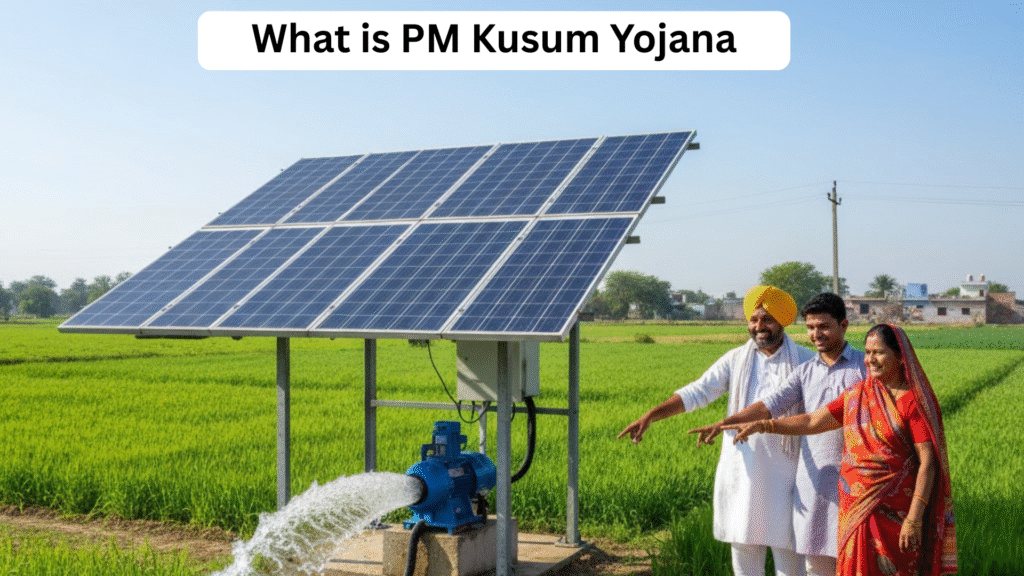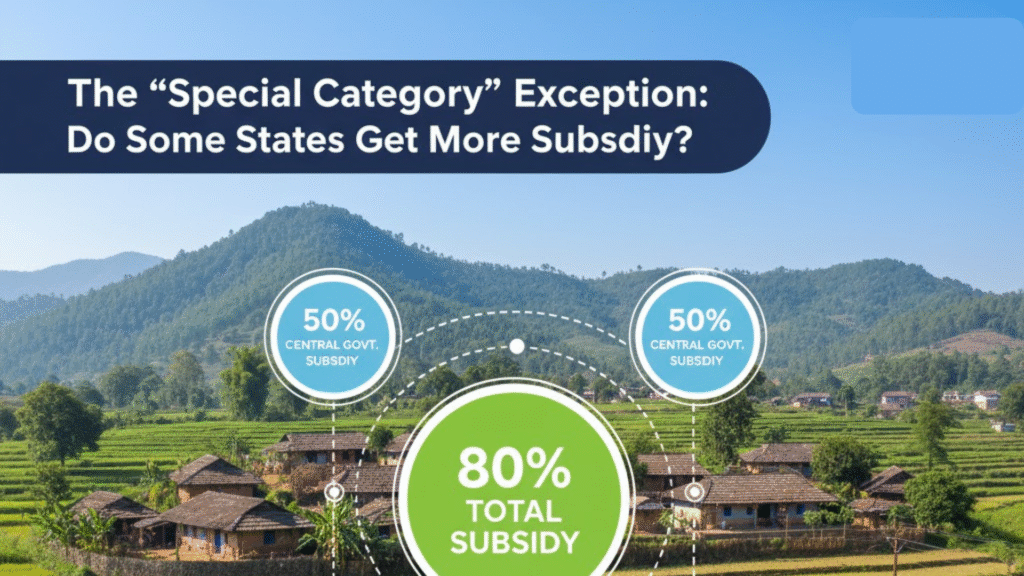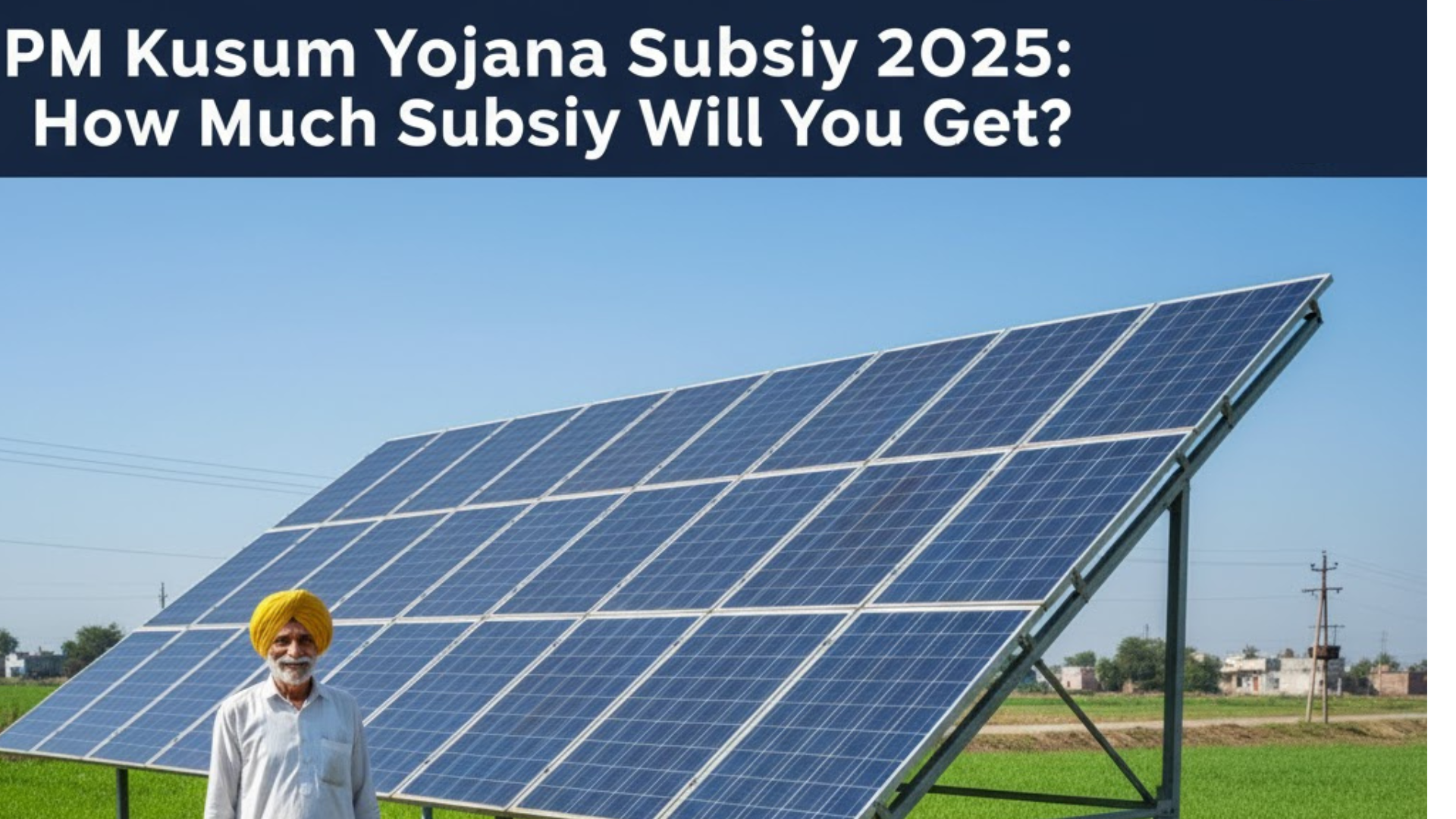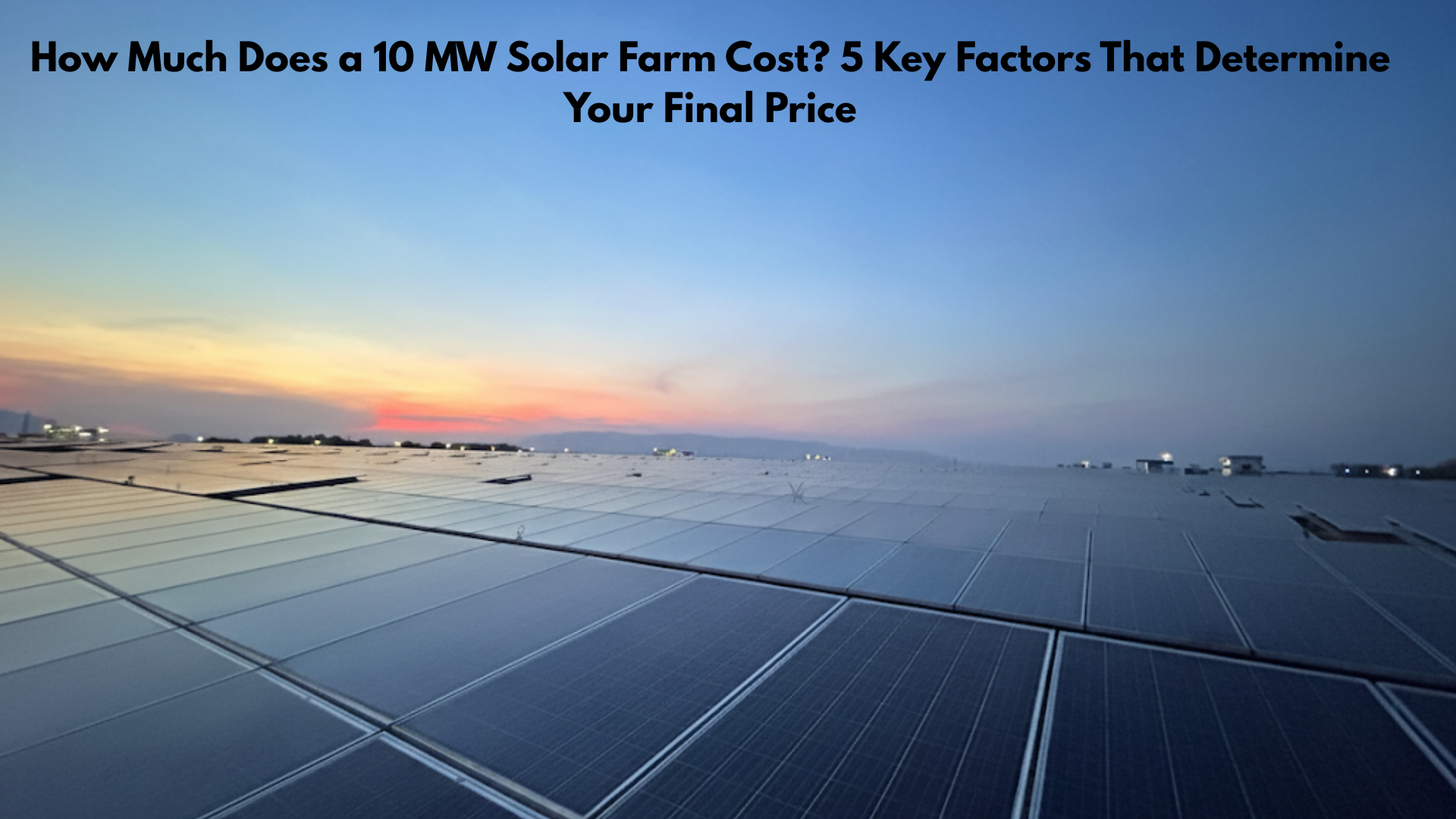Imagine your farm. The crops are thirsty, but the power supply is erratic, or the cost of diesel for your pump is eating away at your profits. It’s a story many Indian farmers know all too well. This constant battle for water and energy is stressful and expensive.But what if you could change that? What if you could have reliable water every single day the sun shines, with zero electricity or diesel costs?This is the exact promise of the PM Kusum Yojana. But it’s easy to get confused. You hear about the scheme, but the big question on your mind is: “This sounds great, but how much does it cost me? What is the real PM Kusum Yojana subsidy?”
This guide will give you a simple, honest, and clear answer. We will break down the numbers, show you how much you actually have to pay, and how to make sure you get the real deal. Forget the jargon; let’s talk about the money.
First, What is PM Kusum Yojana (in Simple Terms)?

Before we can talk about the subsidy, you need to know what you’re getting it for. The PM Kusum Yojana is not just one scheme; it’s a massive program with three different parts, or “Components.”
Here is what they mean:
- Component A: This is for farmers with large, barren (banjar) land. You can set up a solar power plant (500kW to 2MW) and sell the electricity to the grid (DISCOMs) for a fixed income. This is more of a business model than a personal-use pump.
- Component B: This is what most farmers are looking for. It involves installing a new, standalone solar-powered agriculture pump (up to 7.5 HP) in areas where grid electricity is not available. This means you get a brand-new pump that runs on the sun.
- Component C: This is for farmers who already have a grid-connected electric pump. The scheme helps you “solarize” your existing pump. You get solar panels that power your pump. The best part? If you generate extra power, you can sell it back to the grid and earn money.
The PM Kusum Yojana subsidy we are about to discuss applies directly to Component B and Component C.
Quick Comparison: Component A vs. B vs. C
Here is a simple table to help you see the difference:
| Feature | Component A | Component B | Component C |
| Main Goal | Sell electricity | Get a new solar pump | Solarize an existing pump |
| Who is it for? | Farmers with barren land | Farmers with no grid access | Farmers with grid access |
| What do you get? | A solar power plant | A new standalone solar pump | Solar panels for your pump |
| Financial Model | Revenue from selling power | Direct 60% Subsidy | Direct 60% Subsidy |
The Big Answer: The PM Kusum Yojana subsidy Formula (The 10% Magic)

Alright, let’s get to the main event. You want to know the numbers. Here is the simplest breakdown of the subsidy structure for most states in India.
The entire cost of the solar pump or solarization is split into three parts:
1. The 60% Government Share – PM Kusum Yojana subsidy Explained
This is the part you don’t have to pay. The government gives this as a subsidy, splitting it between the Central and State governments:
- 30% Subsidy from the Central Government (Central Financial Assistance or CFA).
- 30% Subsidy from your State Government.
Together, that’s a massive 60% subsidy on the total cost of the solar pump system.
2. The 40% Farmer’s Share (Here’s the Good News)
This is the part that is technically the “farmer’s share.” When you hear “40%,” you might think it’s still too much.
But wait. This is the most important part. You do not have to pay this entire 40% from your own pocket.
This 40% is also split into two parts:
- 30% Bank Loan: You are eligible to get a bank loan for 30% of the cost. Because this scheme is a national priority, these are considered Priority Sector Loans, making it easier for banks to lend to you.
- 10% Your Upfront Cost: This is it. This is the only amount you, the farmer, have to pay from your own pocket.
So, let’s look at the real formula:
| Source of Funds | Percentage of Cost | Your Upfront Cost |
| Central Govt. Subsidy | 30% | ₹0 |
| State Govt. Subsidy | 30% | ₹0 |
| Bank Loan | 30% | ₹0 (Paid back over time) |
| Your Contribution | 10% | Yes (This is your only upfront cost) |
| Total | 100% |
This is the magic 10% formula. You get a 100% new asset by paying only 10% upfront.
Let’s See a Real-World Example: How Much Do You Actually Pay?

Numbers on a table are one thing. Let’s talk about real money.
Let’s imagine the total benchmark cost for a 5 HP solar pump system in your state is ₹2,50,000. (Note: This cost is just an example; the official benchmark cost is set by the Ministry every year).
Here is how the subsidy would work:
- Total System Cost: ₹2,50,000
- Government Subsidy (60%): ₹1,50,000 (This is paid by the government and you never see this bill).
- Remaining 40%: ₹1,00,000
Now, for your 40% share:
- Bank Loan (30%): ₹75,000 (The bank pays this to the vendor).
- Your Upfront Share (10%): ₹25,000
That’s it. You get a brand new ₹2.5 Lakh solar pump system—which will save you thousands every month in diesel—for a one-time upfront payment of just ₹25,000.The ₹75,000 bank loan is easily paid back over the next few years, often from the money you save by not buying diesel or paying electricity bills.
Special Category States: Higher PM Kusum Yojana Subsidy (Up to 80%)

Yes. To promote this scheme in hilly and remote areas, the government offers an even better subsidy.
For “Special Category” States, the subsidy model is even more generous:
- Includes: North-Eastern States (Sikkim, Arunachal, Nagaland, etc.), Himachal Pradesh, Uttarakhand, Jammu & Kashmir, Ladakh, and Island UTs.
In these states, the Central Government subsidy (CFA) is 50%, not 30%.
Let’s see that formula:
- 50% Central Government Subsidy
- 30% State Government Subsidy
- 20% Farmer’s Share
This means farmers in these states get an 80% total subsidy and only have to arrange for the remaining 20% (which is often 10% upfront payment and a 10% bank loan).
🚨 URGENT: How to Apply & Avoid Fake Websites
This is the most important section of this article. Because the PM Kusum Yojana subsidy is so good, many fraudulent, fake websites have been created to scam farmers.
Please read this carefully:
- WARNING: Do NOT apply on any website that ends in .org, .com, or .in.net. Many websites like pmkusumyojanaonline.com or kusum-yojana.org are FAKE. They will ask for a “registration fee” and steal your money.
- THE ONLY OFFICIAL PORTAL: The official national portal for the PM Kusum Yojana is https://pmkusum.mnre.gov.in.
- State Portals: This national portal will have a list of all the official state portals. The application is handled by your state government. For example, in Rajasthan, it is the rajshalom.in portal.
Quick Steps to Apply (The Correct Way)
- Visit the Official Portal: Go to pmkusum.mnre.gov.in.
- Find Your State: Look for the link or button that says “State Portal Links” or “Implementing Agencies.” Click on it and find your state.
- Go to Your State’s Portal: Click the link to go to your official state portal.
- Register: Register on the state portal using your mobile number.
- Check for “Expression of Interest”: The portals open applications at different times. See if they are accepting new applications (often called “Expression of Interest” or EOI).
- Submit Your Application: Fill in the details correctly (Aadhaar, land documents/Jamabandi, bank details).
- Wait for Approval: Your application will be verified.
- Pay Your 10% Share: Once approved, you will be instructed to pay your 10% share directly to the approved vendor (supplier), not to a random agent or website.
Frequently Asked Questions (FAQ)
Q1: What is the last date for the PM Kusum Yojana?
A: The PM Kusum Yojana has been extended and is active. The government has set targets for up to March 31, 2026. However, state portals open and close for applications based on their targets, so you must check your state portal regularly.
Q2: Can I get a 100% subsidy? I saw an ad for it.
A: No. That is a 100% scam. Any ad or person promising a 100% subsidy is lying and trying to steal your money. The maximum government subsidy is 60% (or 80% for special states). You must pay at least 10% upfront.
Q3: Is the subsidy on Component A the same?
A: No. Component A (selling power from barren land) is a revenue model, not a subsidy-on-cost model. The government does not give you a subsidy to build the plant; instead, they give you a guarantee to buy the power you produce at a good rate (Tariff) for 25 years.
Conclusion: Is the 10% Investment Worth It?
Let’s go back to the start. The diesel bills, the unreliable power, the thirsty crops.
The PM Kusum Yojana subsidy is designed to fix this. It’s not just a scheme; it’s a path to self-reliance (Aatmanirbharta). For a small 10% upfront investment, you are getting an asset worth 10 times that amount.
An asset that:
- Stops your monthly diesel bill forever.
- Gives you reliable water, improving your crop quality and quantity.
- Saves you money from day one.
- Can even earn you money if you have a Component C pump.
The 10% investment isn’t a cost; it’s the smartest investment you can make for your farm’s future.
Don’t wait. Check your official state portal today, avoid the fakes, and take the first step toward energy freedom.

